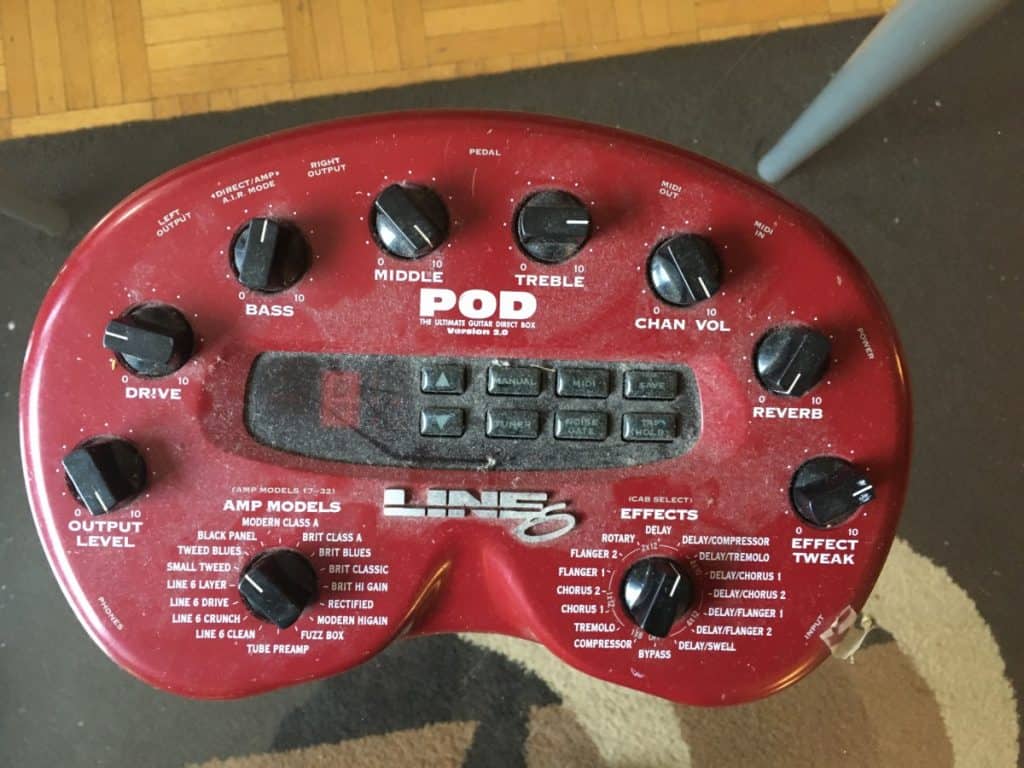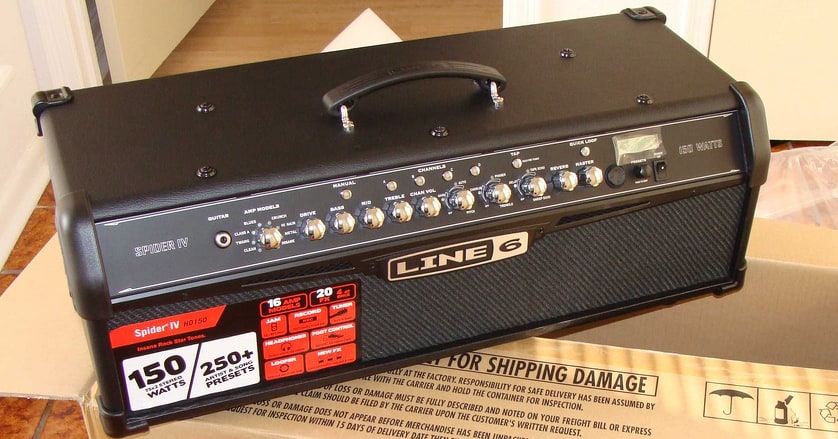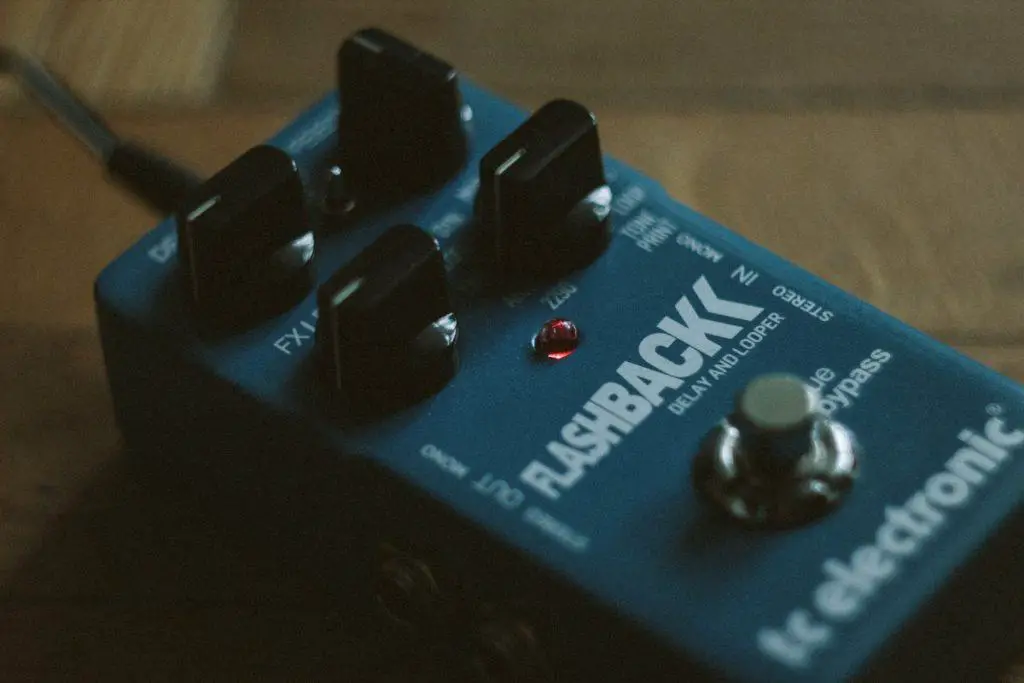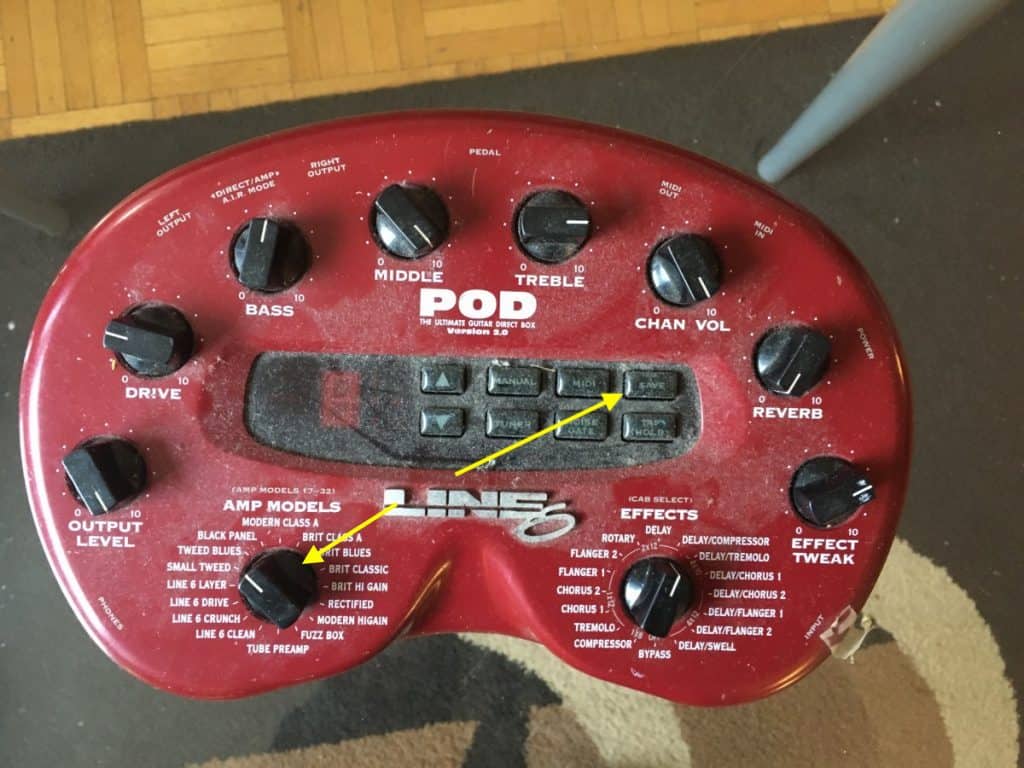As the world continues to rely on computers and computer technology, many industries are changing rapidly.
One of the results of this new digitized world is guitar modeling amps, which first came on the scene approximately 20 years ago with Line 6 and other manufacturers. But what are they and what are some examples?
A guitar modeling amp is an amplifier that uses digital circuitry to replicate the most popular amplifier and cabinet combinations, whether they’re solid-state or vacuum tube amps. Some of the most popular examples of these modeling amps include the Boss Katana, Yamaha THR Series, and Line 6 Helix.
As I just explained a moment ago, it’s not common for guitar modeling amps to use both digital and analog circuitry.
Analog circuitry is a set of technological components that record a sound wave in its original form while going untouched by any processing.
Digital circuitry, on the other hand, cuts the sound up into small sample sizes at a particular interval of time and then stores them in a digital device.
In many cases, digital amplifier modelers can be used as plug-ins in digital audio workstations or they can be built into an amplifier or device of some kind.
What makes amp modelers special is they have the capability to imitate so many different sounds, including before and after the signal has been created.
In other words, a guitar sound can actually be recorded without any effects, also known as “clean,” and then the processing and effects can be applied to it after.
What this means is that the guitarist has more options in terms of what can be done both before and after. You can record just one sound with your guitar, and then apply whatever effects you want to it after it’s been recorded.
Another advantage of this type of circuitry is the fact the instrumentalist doesn’t have to re-record their part with a separate effect, every time they want a new sound.
Admittedly, real analog effects sound much better than digital effects, especially when they’ve been recorded in real-time with the guitar, but there are still major advantages to using digital effects.
More importantly, the quality of digital processing is only getting better year-by-year.
Types Of Guitar Amplifier Modelers
There are a few different kinds of modellers, including modeling amplifiers that have in-built digital circuitry on top of a speaker-cabinet combination, as well as amplifier modellers, which are devices that you can connect to a computer or a speaker cabinet.
1) Digital Amplifier Modelers

One example of an amplifier model is the classic Line 6 POD.
The Line 6 POD system, created in 1998, was a revolutionary product in terms of amp modeling because of its dynamism and versatility.
The very first model of the Line 6 POD, pictured above, was a small red device that connects directly into a computer or an amplifier. It processes the guitar signal and then sends it either directly into the computer for recording or through a speaker-cabinet combination.
Essentially, what the Line 6 POD does is that it takes the input of the guitar signal and sends it through a series of components for processing.
The idea behind digitizing the audio signal is so that we can imitate some of the most popular amplifiers on the market.
While many argue over how good they really sound, amp modelers are incredibly small, light-weight, compact, versatile, cost-effective, and convenient.
Whether or not they sound the best is overlooked by many of their users due to how versatile and useful they are. Personally, I love my Line 6 POD, and I use it all of the time.
If you’re interested in purchasing one, however, I would recommend getting the updated version, the Line 6 HD500x.
There are also multi-effects processors that use the same type of circuitry, not to imitate some of the most common amp/cab combinations, but other effects.
For instance, it’s not uncommon for guitarists to have all of their effects in just one effects pedal, rather than dozens upon dozens of analog pedals that perform the same function.
The result of this is that the player doesn’t need to carry dozens of analog stomp-boxes anymore. A stompbox is another term for “guitar pedal,” which you can read more about here.
As it was just noted, many still argue whether or not a digital amp modeler or a multi-effects processor can come close to the analog sound that the world first got used to when recording and effects became more common and attainable by the average musician.
Really, it’s up to personal preferences, and this will be decided by how much sound quality you’re willing to sacrifice for convenience, portability, ease-of-use, versatility, and dynamism.
2) Digital Modeling Amplifiers

Digital modeling amplifiers are different, in the sense that it’s an amplifier with a processor/modeling device built into it.
For example, modeling amps such as the Peavey Vypyr, Fender Mustang, or the Line 6 Spider series are amplifiers that have computer processors built into them.
In other words, a digital modeling amplifier like a Line 6 Spider II is a speaker system with a digital amplifier modeler built into it.
Higher-end models can amplify the sound with a traditional vacuum tube set up but with digital modeling as well.
Why Guitarists Use Modeling Amplifiers And Amplifier Modelers
There are a number of reasons why guitarists and other instrumentalists are increasingly turning to modelers.
1) Modeling Amps Are Light

Because modeling amps use computers and microprocessors, they tend to be far lighter and more convenient to carry around with you.
It’s not uncommon for a small modeler amp to weigh between 10 and 20 pounds, compared to the much bigger ones which can be 30 to 50 pounds.
Contrast this to a large Mesa 2×12 amplifier/cabinet combination which can weigh over one hundred pounds.
If a musician or guitarist is on the road a lot, a modeling amp or an amplifier modeler is a great option for those who don’t have the patience or the willingness to carry hundreds of pounds of gear.
Additionally, an amp modeler often comes with a series of built-in effects.
2) Built-In Effects

It’s not uncommon for modeling amplifiers to have more in-built effects, which means a musician doesn’t have to carry around as many analog pedals, which are light-weight on their own but can add up, especially if they’re carried in the same bag.
For instance, amplifier modelers such as the Line 6 POD have even more effects built right into them such as flangers, delays, chorus, and more.
3) Modeling Amplifiers Are More Versatile

There’s no question that modeling amplifiers and amplifier modelers are a lot more versatile because they have built-in effects like chorus, delay, compression, distortion, and they mimic different amplifier-cabinet combinations.
While the sound quality might not be as good as a traditional amplifier/cabinet combination, they are excellent at what they do.
Furthermore, because of the circuitry, it’s possible to save settings and presets, and some amplifiers even connect to the internet and are available for updates and other software changes.
4) Ability to Save Presets

One of my favorite aspects of the Line 6 Spider II, which I still own, is the ability to save presets.
It has the option to store the sounds right into the settings, that way you can mess around with other settings and parameters, and then simply restore your preset back to the way it was before.
A modeling amplifier, due to its multiple settings and effects, can be used for almost every type of genre out there, including heavy metal, country music, pop music, bluegrass, and everything else in between.
It’s a jack of all trades and a master of none.
5) Modeling Amplifiers Are More Reliable

The reliability of a modeling amplifier has to do with the way it’s constructed including its circuitry. For instance, an analog tube amp uses glass tubes which function in the same way as light bulbs.
As a result of this, they tend to be a lot more fragile and susceptible to breaking.
Additionally, vacuum tubes tend to wear out over time, which means they need to be replaced after a period of decreasing quality which is very gradual over time.
In other words, tubes wear out very slowly to the point that it’s hard to even hear. Vacuum tubes are a tried-and-true technology but there is more of a risk they’ll break while on the road.
Cons of Using A Modeling Amp Or An Amp Modeler
With all of the benefits of using an amp modeler explained, let’s touch on the defining characteristic of why people often don’t like them.
1) Doesn’t Have The Same Sound As A Tube Amp
This is really the most significant and commonly cited reason for why people don’t like amp modelers.
They simply don’t have the same analog sound that a tube amplifier has.
If you choose to get a high-quality amp modeler such as the Axe FX III, this might be the only reason why you don’t like it, other than the fact there are so many settings, options, and presets to get used too, which is hardly a con.
Examples Of The Guitar Modeling Amp
Modeling Amps
There are a lot of modeling amps on the market now from manufacturers such as Hughes and Kettner, Marshall, Yamaha, Line 6, and more.
One such example is the Hughes and Kettner Switchblade 100, the Line 6 Spider II, and the Yamaha THR10x.
Amp Modelers
One of the most commonly recommended amp modelers is the Axe FX from Fractal Audio.
Amp modelers such as the Line 6 POD or the Axe FX from Fractal Audio are great because you can hook them up to the amplifier cabinet after having plugged them into a power source, and then it’s good to go.
When it comes to amplifier modelers, these are pieces of equipment that act as the headquarters of the amplifier, but they’re not part of the speaker system.
Amp modelers are separate pieces of equipment that do not come with a speaker system. They have to be connected to an amplifier or a computer.
The AXE FX III is definitely one of the most expensive amplifier modelers, but it easily has one of the best reputations.
Other Articles You May Be Interested In
- Guitar Amps vs Amplifier Simulators – THE Definitive Guide
- Guitar Amps vs Studio Monitors – The Differences and More
YouTube Video Tutorial
Conclusion
To sum everything up, a guitar modeling amp uses digital circuitry and computer technology to simulate some of the most common amplifiers on the market.
It’s not uncommon for them to face criticism on account of their digital components, but they’re noted for their convenience and versatility.

 Written By :
Written By :